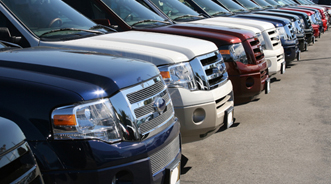Many Consumers Say They Won’t Downsize with Next Purchase

While it’s no secret that fuel costs often affect consumers’ vehicle choices, more than half of shoppers are apparently now saying that they won’t change vehicle size the next time they purchase, according to a recent survey from Consumers Report.
What’s more, almost a fifth (19 percent) said the next vehicle they purchase will be bigger than their current ride. Meanwhile, 25 percent said their next model will be smaller, compared to the 56 percent who are looking to buy a vehicle of the same size.
Breaking it down, Consumer Reports found that the likelihood of buyers going for the same size vehicles is greatest among older shoppers and those from the Northeast, which has relatively higher fuel costs than other regions.
Meanwhile, the demographic most apt to pick a larger ride is the 18- to 34-year-old crowd.
“Despite the common drive to reduce car-operating costs, not everyone wants to downsize. Many young drivers have older vehicles and as their careers grow, there is a natural ambition to have a new or newer car that is more comfortable and reliable — often that means stepping up from a small car to a midsized sedan or other vehicle,” suggested Jeff Bartlett, deputy online editor for Consumer Reports Cars.
“This younger demographic may also be in their family-starting years, and likely in need for more passenger space,” Bartlett continued.
Continuing on, Consumer Reports also shared some of the reasons consumers were most prone to cite for their plans to either buy a larger or smaller ride.
Drivers overwhelming pointed to “improved fuel economy” (92 percent) as a reason to downsize, with “lower maintenance and repair costs” (71 percent) being the second most popular reason.
As far as why they plan on buying a bigger vehicle, the top reason was “need more passenger/cargo space” at 80 percent, followed by “improved comfort” (72 percent).
Moving on, consumers were also asked about which types of vehicle they most frequently drive, and the publication broke down the results by gender.
Women (26 percent) were more likely to drive small cars compared to their male counterparts (18 percent). Meanwhile, men (22 percent) dominated the pickup truck arena compared to women (6 percent).
The average fuel economy cited by respondents was 23 miles per gallon. More than three quarters had fuel economies between 15 mpg and 34 mpg.
Respondents were also asked what fuel economy they expect their next ride to have. The median response was 29 mpg, with a more positive outlook being seen in the under 35-year-old crowd.
Next, Consumer Reports offered the following chart to illustrate its findings:
Normal
0
false
false
false
EN-US
X-NONE
X-NONE
MicrosoftInternetExplorer4
/* Style Definitions */
table.MsoNormalTable
{mso-style-name:”Table Normal”;
mso-tstyle-rowband-size:0;
mso-tstyle-colband-size:0;
mso-style-noshow:yes;
mso-style-priority:99;
mso-style-qformat:yes;
mso-style-parent:””;
mso-padding-alt:0in 5.4pt 0in 5.4pt;
mso-para-margin:0in;
mso-para-margin-bottom:.0001pt;
mso-pagination:widow-orphan;
font-size:11.0pt;
font-family:”Calibri”,”sans-serif”;
mso-ascii-font-family:Calibri;
mso-ascii-theme-font:minor-latin;
mso-fareast-font-family:”Times New Roman”;
mso-fareast-theme-font:minor-fareast;
mso-hansi-font-family:Calibri;
mso-hansi-theme-font:minor-latin;
mso-bidi-font-family:”Times New Roman”;
mso-bidi-theme-font:minor-bidi;}
|
Car type |
Current car percentage |
Next car percentage |
Change percentage pts |
|
Small car |
22 |
26 |
+3.6 |
|
Small SUV |
9 |
12 |
+2.7 |
|
Sporty car |
3 |
5 |
+1.4 |
|
Midsize SUV |
11 |
11 |
0.0 |
|
Convertible |
1 |
0 |
-0.1 |
|
Large SUV |
5 |
5 |
-0.2 |
|
Wagon |
3 |
2 |
-1.1 |
|
Pickup |
14 |
12 |
-2.1 |
|
Minivan |
10 |
6 |
-3.6 |
|
Sedan |
21 |
16 |
-5.7 |

 View The Latest Edition
View The Latest Edition

